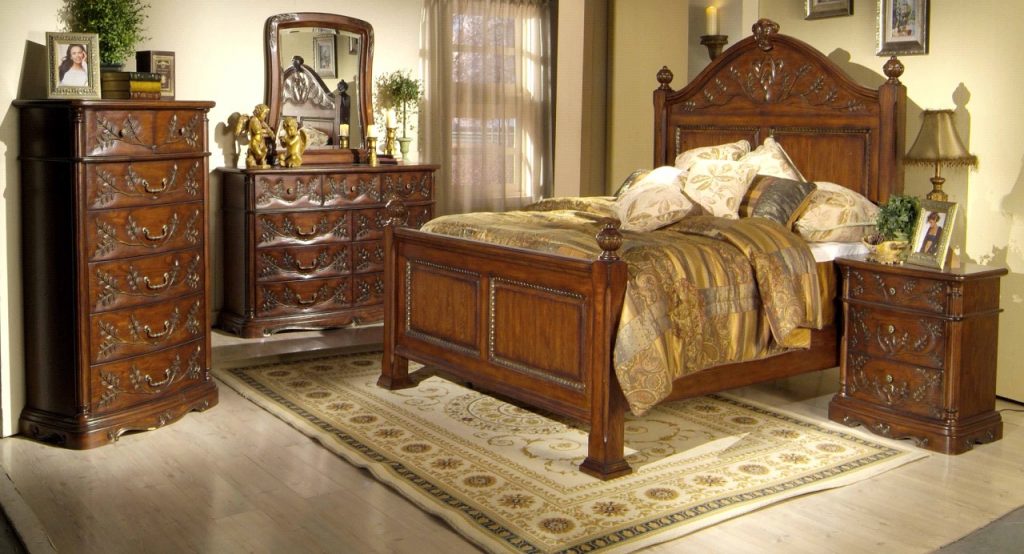<p style="text-align: justify;"><span style="color: #222222;"><span style="font-family: arial,sans-serif;"><span style="font-size: medium;">We have not yet invented anything which can surpass the look and feel of high-quality hardwood furniture. It immediately adds a feeling of pure luxury, beauty and formal dignity to a room. And the superb workmanship of quality wooden furniture is a joy forever.</span></span></span></p>
<p style="text-align: center;"><img class="wp-image-5255 aligncenter" alt="Nothing Beats The Allure Of Quality Wooden Furniture" src="https://medusamagazine.com/wp-content/uploads/2013/07/Exciting-Luxury-Wooden-Bedroom-1024x553.jpg" width="614" height="332" /></p>
<h2 style="text-align: justify;"><span style="color: #222222;"><span style="font-family: arial,sans-serif;"><b>1. Take your Time Choosing</b></span></span></span></h2>
<p style="text-align: justify;"><span style="color: #222222;"><span style="font-family: arial,sans-serif;"><span style="font-size: medium;">You cannot go wrong putting quality wooden furniture into your home. These pieces are instant classics and, if they are well-made from hardwoods, you will be able to pass them on to your children. High-quality wooden furniture will outlive its owners. But when buying wooden furniture it is important to take your time and check that you really are getting what you are paying for.</span></span></span></p>
<h2 style="text-align: justify;"><span style="color: #222222;"><span style="font-family: arial,sans-serif;"><b>2. Do not Compromise</b></span></span></span></h2>
<p style="text-align: justify;"><span style="color: #222222;"><span style="font-family: arial,sans-serif;"><span style="font-size: medium;">If you love high-quality wooden furniture it is important not to compromise. It is probably false economy to buy furniture made from inferior materials such as softwoods like pine or veneers. It is far more prone to damage such as scratches and dents and you will probably have to spend money again replacing it. If you go for hardwoods you are getting a genuine investment. Hardwoods are oak, mahogany, teak, maple, walnut, birch and cherry. These trees are deciduous; they lose their leaves every winter. Softwoods such as pine, cedar and redwood are coniferous; they stay green all year round. There is good quality furniture made from these types of wood, but it is easily damaged.</span></span></span></p>
<h2 style="text-align: justify;"><span style="color: #222222;"><span style="font-family: arial,sans-serif;"><b>3. Check Build Quality</b></span></span></span></h2>
<p style="text-align: justify;"><span style="color: #222222;"><span style="font-family: arial,sans-serif;"><span style="font-size: medium;">Hardwood furniture is not cheap and you want to be sure what you are buying is well made. Expert construction adds to the beauty and life of the piece. Drawers should glide in and out effortlessly. They should also have stops so that they cannot be pulled out all the way. Test the piece for strength by trying to rock it. It should not wobble or twist. It should be level with the floor. Back panels and parts that cannot be seen should still be smooth and well fitted. If they are not it means it is not quality furniture. Doors should close snugly and be flush with the front.</span></span></span></p>
<h2 style="text-align: justify;"><span style="color: #222222;"><span style="font-family: arial,sans-serif;"><b>4. Check the Finish</b></span></span></span></h2>
<p style="text-align: justify;"><span style="color: #222222;"><span style="font-family: arial,sans-serif;"><span style="font-size: medium;">Quality wooden furniture will have a very good finish. Run your hand over it and you should not be able to feel any rough patches. Look at it from different angles to check for blotches. Again check the parts that do not show. The back and the underside should be finished well as this reduces the risk of shrinking or swelling. Things to look out for are; a cloudy surface that is hiding the natural grain of the wood, a rough surface, scratches, dust specks, dents, splintered edges and dull areas that mean not enough lacquer has been applied.</span></span></span></p>
<p style="text-align: justify;"><span style="color: #222222;"><span style="font-family: arial,sans-serif;"><span style="font-size: medium;">All of the above applies to designer outdoor furniture as well. Outdoor furniture has a harsher life than indoor. It has to cope with freezing temperatures and the heat of summer, but if you choose quality pieces they will be able to cope with it.</span></span></span></p>
<p style="text-align: justify;"><span style="color: #222222;"><span style="font-family: arial,sans-serif;"><span style="font-size: medium;"><b>AUTHOR BIO</b></span></span></span></p>
<p style="text-align: justify;"><span style="color: #222222;"><span style="font-family: arial,sans-serif;"><span style="font-size: medium;">Norman Spring is enthusiastic about improving the places we live in. He writes on design and interior decoration for a range of DIY websites. Simplicity and practicality are his watchwords. To get more information about hardwood furniture he suggests companies such as </span></span></span><span style="color: #1155cc;"><span style="font-family: arial,sans-serif;"><span style="font-size: small;">gloster.com </span></span></span><span style="color: #222222;"><span style="font-family: arial,sans-serif;"><span style="font-size: small;">as a good place to start.</span></span></span></p>

Nothing Beats The Allure Of Quality Wooden Furniture
